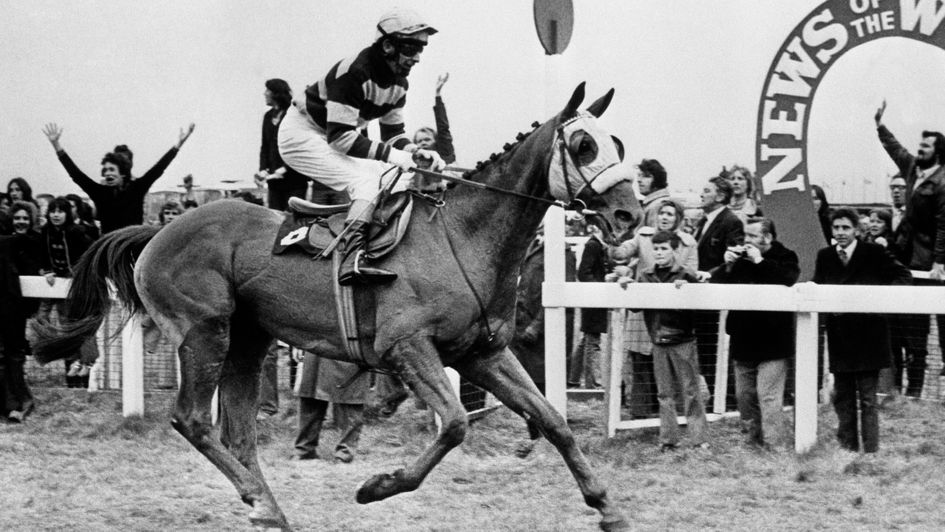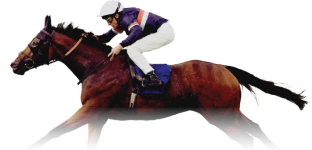In the latest installment in our series of great Randox Grand National horses, Timeform profile L'Escargot.
L’ESCARGOT
“The Snail, The Diplomat & The Chase” was the rather ham-fisted title of a 1976 documentary detailing the story of the previous year’s Aintree hero. Its titular subject matters were, in reverse order, a long-running quest to win the Grand National (“Chase”), prominent Democrat politician/racehorse owner Raymond Guest (“Diplomat”) and the talented Gallic-named steeplechaser L’Escargot (“Snail”). I
n truth, it was clear from early on that L’Escargot had been inappropriately named as there was certainly nothing slow about him – indeed, he’d already started second favourite for a Champion Hurdle and been voted America’s Champion Steeplechase Horse of 1969 (on the back of landing a big race over there) even before registering the first of his back-to-back Cheltenham Gold Cup wins in 1970.
Guest, who was the US Ambassador to Ireland from 1965 to 1968, was better known for his Flat horses (including Derby winners Larkspur and Sir Ivor), but had been obsessed with the Grand National ever since American raider Billy Barton had finished a valiant second in the very eventful 1928 renewal. The big-spending owner was often doubly represented at Aintree, usually with established horses he’d bought out of other yards, until L’Escargot’s trainer Dan Moore made the suggestion that he might be better off simply aiming the best jumper he owned at the race.
L’Escargot made an inauspicious start over the big Aintree fences, getting no further than the third when sent off 17/2 clear favourite in 1972, with jockey Tommy Carberry fearing that the gelding’s quirks were beginning to get the better of things, particularly as he’d recently ruined his chances of a third Gold Cup win by hanging badly right in the latter stages. “He took an instant dislike to Aintree – he was very slow over the first two fences and was almost stopping as we came to the third (where he was brought down)”.
Happily, that didn’t prove a sign of things to come, as L’Escargot quickly got the hang of Aintree’s unique test, finishing placed behind Red Rum in 1973 (never-nearer third after being left too much to do) and 1974 (beaten eight lengths into second having held every chance). Connections realised that 1975 would be the last chance for the now veteran L’Escargot, and he took full advantage of the chance he’d been given by the handicapper, scooting fifteen lengths clear of Red Rum on the run-in, with another old rival Spanish Steps (fourth in 1973 and 1974) a further eight lengths back in third.
GRAND NATIONAL RECORD
1972 – brought down 3rd
1973 – 3rd
1974 – 2nd
1975 – WON
TRAINER
For many years it appeared as if Grand National glory would elude Dan Moore. As a rider, Moore had just missed out in 1938, when Royal Danieli was adjudged (in an era before the photo-finish) to have been beaten a head by Battleship. He’d also handled future National winners Freebooter and Team Spirit early in their careers before selling them on, but L’Escargot ensured the Aintree showpiece could be added to the plethora of big-race wins Moore enjoyed as a highly successful trainer.
JOCKEY
Tommy Carberry, who was Dan Moore’s son-in-law, enjoyed a fine career in the saddle but endured a frustrating time in the National away from L’Escargot. His only ”completion” from nine other tries came when fifth on Packed Home (owned by Guest) behind Foinavon in 1967, though even then he’d needed to restart after getting caught up in the melee at the twenty-third! He went on to train 1999 winner Bobbyjo, who was ridden by his son Paul.
FACT
L’Escargot’s dam What A Daisy was a three-parts sister to 1958 National winner Mr What and had a remarkable association with the race herself. In addition to L’Escargot, she was represented in the race four times by his half-brother The Pilgarlic – who finished third, fourth (twice) and fifth – and the latter was joined by his brothers What A Buck in 1977 (sixth) and Flitgrove in 1979 (pulled up).










